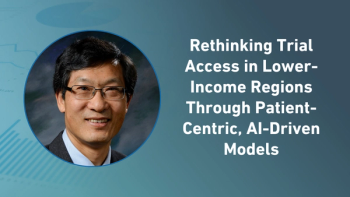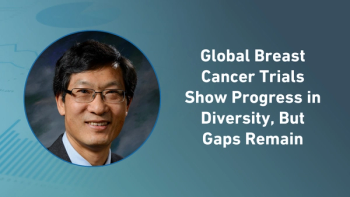
A Market Failure for Antimicrobial Resistant Medicines
While the world focuses on COVID-19, this article provides insight on the current state of the market for antimicrobial resistant (AMR) medicines.
As the world focuses on COVID-19, various strains of bacteria, fungi, viruses and parasites are quietly evolving into antimicrobial resistant (AMR) pathogens. Novel drug-resistant strains include methicillin-resistant Staphylococcus aureus (MRSA), and the bacterial species that cause tuberculosis, malaria, gonorrhea and complicated urinary tract infections (cUTIs). Given the relative ease of global travel, coupled with exposure risk in densely populated areas, many experts believe an infectious disease pandemic similar to COVID-19 will occur again within decades.
According to the World Health Organization (WHO), more than 700,000 people die of AMR infections globally each year.1 An influential 2014 AMR review chaired by economist Lord Jim O’Neil reported that, by 2050, AMR infections are estimated to cause 10 million annual deaths (exceeding cancer), lead to a 2 to 3.5 percent reduction in global gross domestic products (GDPs)-equivalent to the 2007–2008 financial crisis-and cost the global economy $100 trillion.2
AMR occurs naturally when use of antimicrobial drugs inevitably induce adaptive selection in microorganism populations, a problem notably amplified by the overuse of antibiotics. In the U.S., where more than 35,000 people die of drug-resistant bacterial infections each year in acute care hospitals, the Centers for Disease Control and Prevention (CDC) estimates 30 percent of all antibiotics are prescribed incorrectly or unnecessarily.3 In response, global and national healthcare agencies encourage antimicrobial stewardship programs to promote appropriate and limited antimicrobial use.
A lose-lose dilemma
Many AMR experts view antimicrobial stewardship as a double-edged sword. To safeguard their effectiveness, physicians often avoid prescribing the newest antimicrobials; however, while limiting antimicrobial use can slow AMR, it also serves to discourage drug makers from developing new therapies-an endeavor that takes more than 10 years and exceeds $1.5 billion.4 Adding to the economic disincentive is the fact that, unlike other disease areas, antimicrobial drugs cure an underlying disease relatively quickly (within days to a few weeks), resulting in limited sales volume. Some experts believe the underlying patient population is too small to support a thriving market for continuous antimicrobial drug development. Kevin Outterson, Executive Director of CARB-X said at the 2020 World Economic Forum, held virtually in Davos, Switzerland, “If you invent a mediocre antibiotic, your sales will be low; if you develop a great antibiotic, your sales will be lower.”
Government policies frequently serve as disincentives as well. For example, Medicare reimbursements for patients with infections are based on diagnostic related codes (DRGs) and paid in a fixed, lump sum for the total care of a patient-not on individual medicines administered to the patient. These lump-sum payments may serve as profits when per patient expenditures are lower than Medicare reimbursements, or as a loss if the cost of care exceeds the fixed reimbursement. As such, healthcare administrators may encourage use of lower cost and older antimicrobial medicines to reduce the overall cost of inpatient care.5
Evan Loh, MD, CEO of Paratek Pharmaceuticals and Chair, Antimicrobials Working Group, was reached for comment on cost of care via email. He said, “We have a fragile and failing antimicrobial biotechnology ecosystem and the fix to a vibrant, innovative and sustainable marketplace will require government, non-government organizations and the biopharmaceutical industry to work together to create a system that solves for the best patient care and ensures a robust pipeline of new antimicrobials accessible to patients, when we need them most.”
As cost of care continues to be a key concern, fewer new and more expensive antimicrobials are prescribed, especially when compared to generic antimicrobial drugs. Generic drugs cost about 80 percent less than their branded counterparts and significantly reduce the financial burden on patients and healthcare systems. Ironically, generic antimicrobial drug approvals further stress this uniquely challenged market.
An illustrative example is Cubicin (daptomycin), discovered by researchers at Eli Lilly and Company in the early 1980s (known then as LY146032). During clinical trials in 1991, Eli Lilly voluntary withdrew LY146032 due to skeletal muscle toxicity levels observed at low doses. With increasing awareness and concern for AMR, Cubist Pharmaceuticals licensed the worldwide rights from Lilly in 1997, initiated clinical trials using lower dosing in 1999, and gained FDA approval of Cubicin to treat gram-positive pathogens in September 2003.6 When Merck & Co purchased Cubist Pharmaceuticals for $9.5 billion in 2014, Cubicin was considered a blockbuster drug, generating more than $700 million in sales within nine months. Hopes for a high return on investment (ROI) were quickly dashed, however, when a U.S. federal court invalidated several Cubicin patents, resulting in early generic development and competition that ultimately ate away 2015 sales revenue.7 By 2019, annual sales had dropped to slightly more than $360 million.
Poor investment returns reflect the limitations of the antimicrobial drug market. Annual sales of new antibiotics typically do not exceed $100 million (for approximately 30 percent of new antibiotic drugs sold between 2000–2015) compared to more than $500 million in sales for oncology drugs in 2016.8 Investors aware of the small ROI are reluctant to provide sufficient capital to support development of novel antimicrobial therapies; in fact, venture capital funding fell more than 10-fold between 2016 and 2019. With the inherent risk involved, it is not surprising that 90 percent of antimicrobial developers are small to medium biotech companies, or that more and more major pharmaceutical companies are leaving the antimicrobial market each year.9
Seeking incentives
Biopharmaceutical companies need external incentives to drive development of novel drugs that serve small populations. Economists define major incentive mechanisms as push, pull and decoupling.10 Push mechanisms financially support research programs through the “valley of death,” the period between drug discovery and commercialization. Pull incentives support late stage clinical trials and reward companies once their products hit the market. Decoupling is the liberation of ROI from volume of sales and is an aspect of pull mechanisms.4
Push incentives largely come from the private sector and public-private partnerships, but there are few players due to inherent risk and low ROI. The Novos REPAIR Impact fund, started in 2017, is one of the remaining private investment funds focusing on the AMR space, with $165 million to funnel into antimicrobial focused start-ups. A prominent public-private partnership, CARB-X, offers collaboration between the National Institute of Allergy and Infectious Diseases (NIAID), the Biological Advanced Research and Development Agency (BARDA), and three life science nonprofit foundations (Wellcome Trust of London, California Life Sciences Institute and MassBio). CARB-X has invested $189.3 million to move antimicrobial products to clinical trials since 2016.11
Non-profits, such as the Global Antibiotic Research and Development Partnership (GARDP), focus on areas of unmet needs by leveraging their experts and partnering with private sector firms. Recent successes include zoliflodacin (also known as AZD0914 and ETX0914, Entasis Therapeutics), a first in class antibiotic used to treat Neisseria gonorrhoeae, the antibiotic resistant strain of gonorrhea. Zolifodacin is currently in Phase III clinical trials.
Unfortunately, even after a new antibiotic drug is pushed across the proverbial finish line-achieving regulatory approval and market access-there’s no guarantee of success. A case illustrating that point is seen in the small biotech Achaogen. Focused on the AMR space, the company appeared to have good long-term prospects after receiving $2.4 million in initial CARB-X funding in 2018. Almost exactly one year later, the company filed for Chapter 11 bankruptcy. Researchers at Achaogen spent 15 years developing the antibiotic Zemdri (plazomicin), used to treat carbapenem-resistant Enterobacteriacea; however, despite Zemdri receiving FDA approval in 2019 and placement on the WHO’s list of essential medicines, the first six months of sales were less than $1 million.12
While significant market challenges exist, so do opportunities, such as developing therapeutics for biodefense. A year after FDA approval of antimicrobial drug Nuzyra (omadacycline, Paratek Pharmaceuticals), BARDA’s Project BioShield awarded Paratek Pharmaceuticals a contract valued at up to $285 million to support its development for the treatment of pulmonary anthrax.13
“Paratek’s Project BioShield contract with BARDA is a prime example of how innovative long-term public-private partnerships can positively impact the trajectory of antimicrobial companies. We need to see more of these collaborations if we are going to address antimicrobial resistance,” said Dr. Loh via email.
Gaining legislative alternatives
Over the years, multiple stakeholders made urgent calls for policy-driven government actions that largely recommended adoption of pull strategies and the decoupling of antimicrobial development incentives from market returns. In the U.S., those calls were met with the Generating Antibiotic Incentives Now (GAIN) Act of 2012, which extended the five-year market exclusivity for qualified infectious disease products (QIDP) and required the FDA to provide feasible trial designs.
Additional U.S. legislative action is found in the Developing an Innovative Strategy for Antimicrobial Resistant Microorganisms (DISARM) Act (S. 2019), which currently is working its way through Congress. GAIN removes Medicare reimbursement challenges by eliminating DRG fixed payments for patients treated for nosocomial infections (healthcare-acquired infections), which frequently extend inpatient hospital stays, require administration of intravenous medicines and substantially increase healthcare costs. The Center for Medicare & Medicaid Services (CMS) also recently enacted a new rule stating new QIDPs need only meet cost criteria, rather than demonstrate “substantial clinical improvement,” which should increase payments to drug developers.14 These legislative actions, however, are generally seen as incremental rather than game-changing.
Proposals such as large market entry rewards (MERs), which economist Lord Jim O’Neill views as critical to mobilizing a steady stream of new antimicrobials, largely remain in the theoretical realm due to financial and political reasons. Former FDA Commissioner Scott Gottlieb proposed a fixed licensing model, where institutions pay a fixed fee for access to a specific number of drugs.15 A version of the fixed licensing approach is currently being piloted by the U.K. and Swedish governments. Pharmaceutical manufacturers are seeking a transferable voucher system in the U.S., where market exclusivity or prioritized review vouchers can be transferred to different drugs after regulatory approval.16 Another approach is to promote non-profit antimicrobial drug developers, such as GARDP, to decouple drug development from profits. This would allow organizations to focus on developing antimicrobials in unprofitable areas that meet unmet needs, as well as require substantially less public investment.17
Less “me-too” and more clinical utility
Despite the WHO declaring a crucial need for development of innovative antibiotics, of the antimicrobial drugs under clinical development in September 2019, approximately 50 percent fell within an existing antibiotic therapeutic class, or “me-too” drugs. In the first month of 2020, the WHO stated that of the 50 antibiotics currently in clinical development, most are not considered significant upgrades and only two are active against notoriously drug resistant gram-negative bacteria.18 David Shlaes, MD, PhD and a global AMR expert, said in his blog, Antibiotics – The Perfect Storm19: “When I look at drug discovery and development plans and proposals, although I consider ‘innovation,’ what I truly evaluate and value is potential clinical utility. These two characteristics do not always go together.”
However, innovative drugs developed to combat infectious diseases can succeed in a seemingly broken market. In 2013-2014, Gilead Sciences spearheaded the commercialization of a new generation of hepatitis C (HCV) drugs, which substantially reduced the cost of existing treatment and saved more than 100,000 thousand lives. Sovaldi (sofosbuvir), a direct-acting antiviral approved by the FDA in 2013 and first marketed in 2014, reached sales of $10.3 billion. Harvoni (sofosbuvir/ledipasvir), approved by the FDA in October 2014, achieved $2.1 billion sales by February 2015.20
When considering innovative drug development, Dr. Shlaes suggests rather than focusing on novel therapeutic class or treatment platforms, innovative drug development should include “clinical utility.” Clinical utility takes into account lack of cross-resistance (the accepted definition of an “innovative drug”) in concert with how physicians prescribe drugs for their patients. For example, clinical utility recognizes that even a new drug in the same therapeutic class may reduce or eliminate the need to monitor drug levels, provide higher safety levels, reduce dosing requirements, offer oral versus intravenous administration, or eliminate the need for experimental diagnostic tests. Dr. Shlaes cites β-lactamase inhibitors Avycaz (combination of avibactam with ceftazidime, jointly developed by Teva and AstraZeneca) and Vabomere (combination of vaborbactam with meropenem, The Medicines Company)-drugs that existed for decades and are in the same therapeutic class-as examples of innovation coupled with clinical utility. “These therapies are innovative in that they use new chemistries to achieve a much broader spectrum of inhibition,” Dr. Shlaes explained in his blog.19
Approaching drug development from the perspective of clinical utility may have multiple benefits, such as circumventing DRG lump-sum reimbursements. For example, SPR994 (tebipenem, Spero Therapeutics), an oral carbapenem antibiotic, received FDA Fast Track designation in March 2019 to treat complicated urinary tract infections (cUTIs) and acute pyelonephritis. By developing an oral therapeutic that can be administered in a community versus hospital setting, Spero strives to reduce inpatient healthcare costs in tandem with meeting the unmet needs of patients.21
While extrinsic and intrinsic barriers certainly exist, inertia can only hold for so long. Indeed, notable progress has been made. The global pipeline of new antibiotics increased seven-fold from 2004–2019. Global and national organizations are taking action through funding and awareness campaigns. Yet to truly disrupt the evolutionary progress of microorganisms, we need an increase in public and private sector investments, decisive legislation, scientific ingenuity and innovative drug developers willing to take a risk. “But mostly we need to fix the broken market,” Dr. Shlaes noted in his blog. “At this point, nothing else will suffice and everything else is window dressing.”19
About the authors
Michael K. O’Brien, PhD
President & CEO of NGT BioPharma Consultants, Dr. O’Brien is recognized as a forward-thinking innovator in the biopharmaceutical industry.
Philip Chu, PhD
A neuroscientist, Dr. Chu currently works as a research instructor in epilepsy and neurodevelopment disorders at the University of Colorado, Anschutz Medical campus.
References
- World Health Organization Interagency Coordination Group on Antimicrobial Resistance, NO TIME TO WAIT: SECURING THE FUTURE FROM DRUG-RESISTANT INFECTIONS, April 2019, accessed February 2020 at
https://www.who.int - O'Neil J, Antimicrobial Resistance: Tackling a crisis for the health and wealth of nations, December 2014, accessed February 2020 at https://amr-review.org
- CDC, 2018: Antibiotic Use in the United States, Progress and Opportunities, 2019, accessed February 2020 at
https://www.cdc.gov - Towse A, Hoyle CK, Goodall J, et al.,Time for a change in how new antibiotics are reimbursed: Development of an insurance framework for funding new antibiotics based on a policy of risk mitigation, Health Policy (New York),2017;121(10):1025-1030, accessed February 2020 at
https://doi.org - CMS, Inpatient PPS PC Pricer, last modified January 16, 2020, accessed February 2020 at
https://cms.gov - Carpenter CF, Chambers HF, Daptomycin: Another Novel Agent for Treating Infections Due to Drug-Resistant Gram-Positive Pathogens, Clinical Infectious Diseases, Volume 38, Issue 7, 1 April 2004, Pages 994–1000, accessed February 2020 at
https://doi.org - Sagonowsky E, Merck/Cubist, December 3, 2019, accessed February 2020 at
https://www.fiercepharma.com - Daniel GW, McClellan MB, Schneider M, et al., Value-based strategies for encouraging new development of antibiotic drugs, August 3, 2017, accessed February 2020 at
https://healthpolicy.duke.edu - Pew Charitable Trusts, Tracking the Global Pipeline of Antibiotics in Development, September 3rd, 2019, accessed February 2020 at
https://www.pewtrusts.org - Roope LS, Smith RD, Pouwels KB, et al., The challenge of antimicrobial resistance: What economics can contribute, April 5, 2019, accessed February 2020 at
https://science.sciencemag.org - Kutay K, World Economic Forum, Why developing new antibiotics is a matter of life and death, January 21, 2020, accessed February 2020 at
https://www.weforum.org - Langreth R, Antibiotics Aren’t Profitable Enough for Big Pharma to Make More, May 3, 2019, accessed February 2020 at
https://www.bloomberg.com - Paraket Pharmaceuticals, Paratek Awarded BARDA Project BioShield Contract for NUZYRA®, December 18, 2019, accessed March 2020 at
https://www.globenewswire.com - MacDonald JV, The DISARM Act Proposes New Strategies to Fight the Growing Threat of Antibiotic Resistance, October 17, 2019, accessed February 2020 at
https://www.infectioncontroltoday.com - FDA, Statement from FDA Commissioner Scott Gottlier, M.D., on FDA’s efforts to foster discovery and development of new tools to fight antimicrobial-resistant infections, June 12, 2018, accessed February 2020 at
https://www.fda.gov - Årdal C, Findlay D, Savic M, et al., Revitalizing the antibiotic pipeline: Stimulating innovation while driving sustainable use and global access, January 2018, accessed February 2020 at
http://drive-ab.eu - Nielsen TB, Brass EP, Gilbert DN, et al., Sustainable Discovery and Development of Antibiotics- Is a Nonprofit Approach the Future? New England Journal of Medicine, 2019; 381(6): 503-505
- World Health Organization, Lack of new antibiotics threaten global efforts to contain drug-resistant infections, January 17, 2020, accessed February 2020 at
https://www.who.int - Shlaes D., The Echo Chamber, Antibiotics -The Perfect Storm/Innovation or Utility? November 3, 2019, accessed March 2020 at
https://antibiotics-theperfectstorm.blogspot.com - Andrew Pollack, Sales of Solvadi, New Gilead Hepatitis C Drug, Soar to $10.3 Billion, February 2015, accessed March 2020 at
https://www.nytimes.com - StreetInsider, Spero Therapeutics (SPRO) Receives FDA Fast Track Designation for SPR994 for treatment of cUTI and Acute Pyelonephritis, March 29, 2019, accessed March 2020 at streetinsider.com
Digital Sources
https://www.who.int/antimicrobial-resistance/interagency-coordination-group/final-report/en/ https://amr-review.org/sites/default/files/AMR%20Review%20Paper%20-%20Tackling%20a%20crisis%20for%20the%20health%20and%20wealth%20of%20nations_1.pdf https://www.cdc.gov/antibiotic-use/stewardship-report/pdf/stewardship-report-2018-508.pdf https://pubmed.ncbi.nlm.nih.gov/28888660-time-for-a-change-in-how-new-antibiotics-are-reimbursed-development-of-an-insurance-framework-for-funding-new-antibiotics-based-on-a-policy-of-risk-mitigation/ https://www.cms.gov/Medicare/Medicare-Fee-for-Service-Payment/PCPricer https://pubmed.ncbi.nlm.nih.gov/28888660-time-for-a-change-in-how-new-antibiotics-are-reimbursed-development-of-an-insurance-framework-for-funding-new-antibiotics-based-on-a-policy-of-risk-mitigation/ https://www.fiercepharma.com/special-report/merck-cubist-0 https://healthpolicy.duke.edu/PAVE https://www.pewtrusts.org/en/research-and-analysis/issue-briefs/2019/09/tracking-the-global-pipeline-of-antibiotics-in-development https://science.sciencemag.org/content/364/6435/eaau4679 https://www.weforum.org/agenda/2020/01/how-to-prevent-superbugs-antibiotics-development/ https://www.bloomberg.com/news/articles/2019-05-03/antibiotics-aren-t-profitable-enough-for-big-pharma-to-make-more https://www.globenewswire.com/news-release/2019/12/18/1962517/0/en/Paratek-Awarded-BARDA-Project-BioShield-Contract-for-NUZYRA.html https://www.infectioncontroltoday.com/clinical/disarm-act-proposes-new-strategies-fight-growing-threat-antibiotic-resistance https://www.fda.gov/news-events/press-announcements/statement-fda-commissioner-scott-gottlieb-md-fdas-efforts-foster-discovery-and-development-new-tools http://drive-ab.eu/wp-content/uploads/2018/01/DRIVE-AB-Final-Report-Jan2018.pdf https://www.nejm.org/doi/full/10.1056/NEJMp1905589 https://www.who.int/news-room/detail/17-01-2020-17-01-2020-lack-of-new-antibiotics-threatens-global-efforts-to-contain-drug-resistant-infections https://antibiotics-theperfectstorm.blogspot.com/2019/10/the-echo-chamber.html https://www.nytimes.com/2015/02/04/business/sales-of-sovaldi-new-gilead-hepatitis-c-drug-soar-to-10-3-billion.html https://www.streetinsider.com/Corporate+News/Spero+Therapeutics+%28SPRO%29+Receives+FDA+Fast+Track+Designation+for+SPR994+for+treatment+of+cUTI+and+Acute+Pyelonephritis/15313321.html
Newsletter
Stay current in clinical research with Applied Clinical Trials, providing expert insights, regulatory updates, and practical strategies for successful clinical trial design and execution.






.png)



.png)



.png)
.png)
